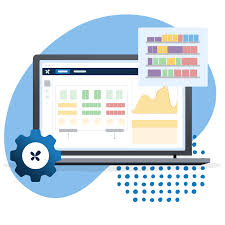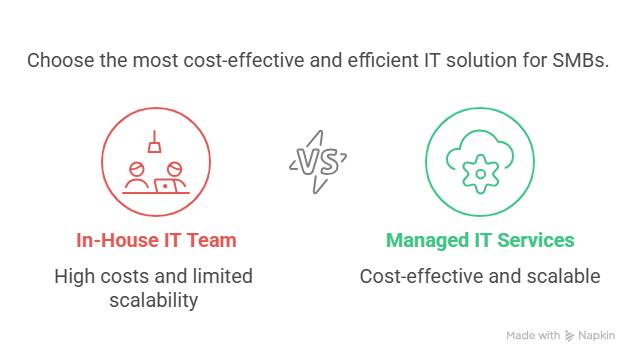Retail Assortment Planning Software and Its Role in Improving Business Outcomes

Strong 8k brings an ultra-HD IPTV experience to your living room and your pocket.
In today's supply chains, merchandise planning is getting continually harder. This is a result of the quick changes in client demands and preferences. Retail stores struggle when it comes to changing along with these shifts and maintaining the right amount of stock. This frequently results in losses due to too much stock, not enough goods for sale, and inventory shrinking.
To correctly manage inventory, estimate demand, and budget for end-to-end merchandising expenses, businesses require a strong solution. Retail assortment planning software is the solution that can enable organizations with these abilites. This solution brings together technology and data to help stakeholders collaborate well, keep up with what's trending, and stock what people actually want.
With a retail planning and allocation system, businesses can serve customers better based on changes in demand and just keep growing bigger without any hassles.
Understanding Retail Assortment Planning Software
Retail planning is key for making sure that when shoppers want to buy a product from the store, they don’t return empty-handed. Merchandising planning tools can transform how stores handle this process. They assist in managing inventory, buying, pricing, and product disposal in an organized way. The effectiveness of retail merchandise planning systems is further improved by technologies like automation, machine learning, and artificial intelligence.
These tools let organizations know how they're performing, how fast a particular industry changes, and what customers like best right now. Such information help business to plan their production, stock replenishment, and inventory movement.
Here's how some key features of retail assortment planning software can boost performance and also increase business profitability.
Predictive Analytics
It is one of the key components of retail merchandise planning systems that aid in forecasting consumer preferences and market developments. By examining past sales data, current market trends, and customer behavior, the algorithm predicts future demand. Artificial intelligence powers this system, allowing businesses to attain ideal stock levels.
Advanced Inventory Optimization Algorithms
Using manual methods for handling inventories can lead to inefficiencies in inventory optimization. This may lead to either overspending cash on extra goods or losing revenues because of stockouts. Such scenarios can be avoided by using merchandising planning tools. Using AI and ML algorithms, it can continually track sales patterns, seasonal demand, and supplier lead times to manage inventories and maintain product availability.
Real-time Dashboards for Tracking
Organizations need to track their key performance indicators (KPIs) on an ongoing basis for making strategic decisions while optimizing their planning framework. Retail planning and allocation system allows users to view real-time diverse data through its user-friendly dashboard interface.
Sales performance, stock levels, pricing variations, and consumer demand are some of the KPIs that can be instantly tracked. Retailers can react quickly to market changes and optimize operations through this real-time performance tracking.
How Merchandising Planning Tools Improve Business Outcomes
The features of merchandising planning tools enable businesses stay stable in terms of both finance and operations, while they manage their merchandise planning. Here’s how this solution can maximize business outcomes in various stages of the retail planning process.
Demand Planning
The predictive analytics feature of the retail assortment planning software aids in the analysis of several factors for accurate demand forecasting. These include purchasing habits, seasonal trends, and current economic situations. Together, these factors can aid businesses in planning their production process and inventory management with actual demand, minimize waste, and reduce related costs.
Real-time Inventory Monitoring
Retail merchandise planning systems make it possible for organizations to monitor constant stock flows between warehouses and retailers. This helps businesses to stay informed about the shortage in stocks. They can also make smart replenishment steps to optimize stock distribution depending on real-time demand. This benefits vendors by lowering storage costs and increasing supply chain efficiency.
Data-Driven Assortment Planning
Manually determining the optimal quantity of product for each retail location is tough. AI-powered merchandising planning tools can take into account a variety of factors, eliminating the guesswork in maintaining an optimum product balance. Retail planning and allocation system analyzes location-based sales data, client preferences, and local trends to offer the best product options. This guarantees that businesses can satisfy client demand while increasing profits.
Dynamic Pricing Automation
Constant pricing adjustments are critical for retaining profitability. Retail planning software with price automation can do routine analyses of market situations, competitor pricing, and real-time customer demand. Based on this, businesses can handle the pricing strategy to stay competitive and make more revenue.
Collaborative Planning
The interactive dashboard of the retail assortment planning software enables teams in the merchandising process to work collaboratively. This solution ensures that the teams are working with the same data, eliminating silos. Thus, retailers can manage workflows and granular financial sales targets smoothly.
Bottom Line
Retail merchandise planning systems help retailers cut down human errors with automation, and they also automatically improve operations by using data in a way that brings efficiency. With careful planning and collaboration, these solutions also help businesses make plans proactively and get adapt to demand fluctuation. These features of retail assortment planning software greatly enhance the merchandising planning process in various ways, leading to higher profitability and satisfied customers.
Looking ahead, retail planning will be substantially improved by emerging innovations including augmented reality, GenAI, and RFID. Businesses can anticipate customer needs, customize better, and gain more visibility into inventory management using these technologies. They need to assess their current retail planning challenges and invest in these technologies to facilitate change. This means that they can intelligently optimize their inventory, deliver value to their customers, generate profits, and grow in the long term.
Note: IndiBlogHub features both user-submitted and editorial content. We do not verify third-party contributions. Read our Disclaimer and Privacy Policyfor details.







